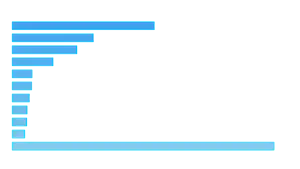In April 2025, U.S. President Donald Trump introduced an initial proposal focused on reciprocal trade tariffs, aiming to redefine America’s global trade relationships. The idea was rooted in the belief that if foreign nations imposed higher tariffs on U.S. goods, the U.S. should respond with tariffs of equal value on imports from those countries.
This proposal marked a continuation of Trump’s broader “America First” economic agenda, emphasizing domestic industry protection and the reduction of trade imbalances. Advocates argued that reciprocal tariffs would encourage fairer trade practices and create leverage for negotiating better deals. Critics, however, warned that such measures could escalate trade tensions and disrupt global supply chains.
Since the initial announcement, many of the proposed tariffs have been revised or adjusted in response to economic feedback, diplomatic pushback, and evolving market conditions. The plan sparked renewed debate on the role of tariffs in modern economic policy, and its long-term impact remains a topic of ongoing discussion among analysts and policymakers.











